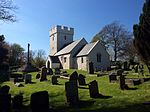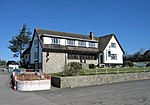Cardiff Airport
Airports in WalesCivilian airports with RAF originsGovernment-owned companies of WalesRhooseTransport in Cardiff ... and 2 more
Transport in the Vale of GlamorganUse British English from May 2013

Cardiff Airport (Welsh: Maes Awyr Caerdydd) (IATA: CWL, ICAO: EGFF) is an airport based in Rhoose, Wales. It is the only airport offering commercial passenger services in Wales. The airport is owned by the Welsh Government, operating at it at arm's length as a commercial business.
Excerpt from the Wikipedia article Cardiff Airport (License: CC BY-SA 3.0, Authors, Images).Cardiff Airport
Picton Road,
Geographical coordinates (GPS) Address External links Nearby Places Show on map
Geographical coordinates (GPS)
| Latitude | Longitude |
|---|---|
| N 51.396666666667 ° | E -3.3433333333333 ° |
Address
Cardiff Airport
Picton Road
CF62 3HU , Rhoose
Wales, United Kingdom
Open on Google Maps










